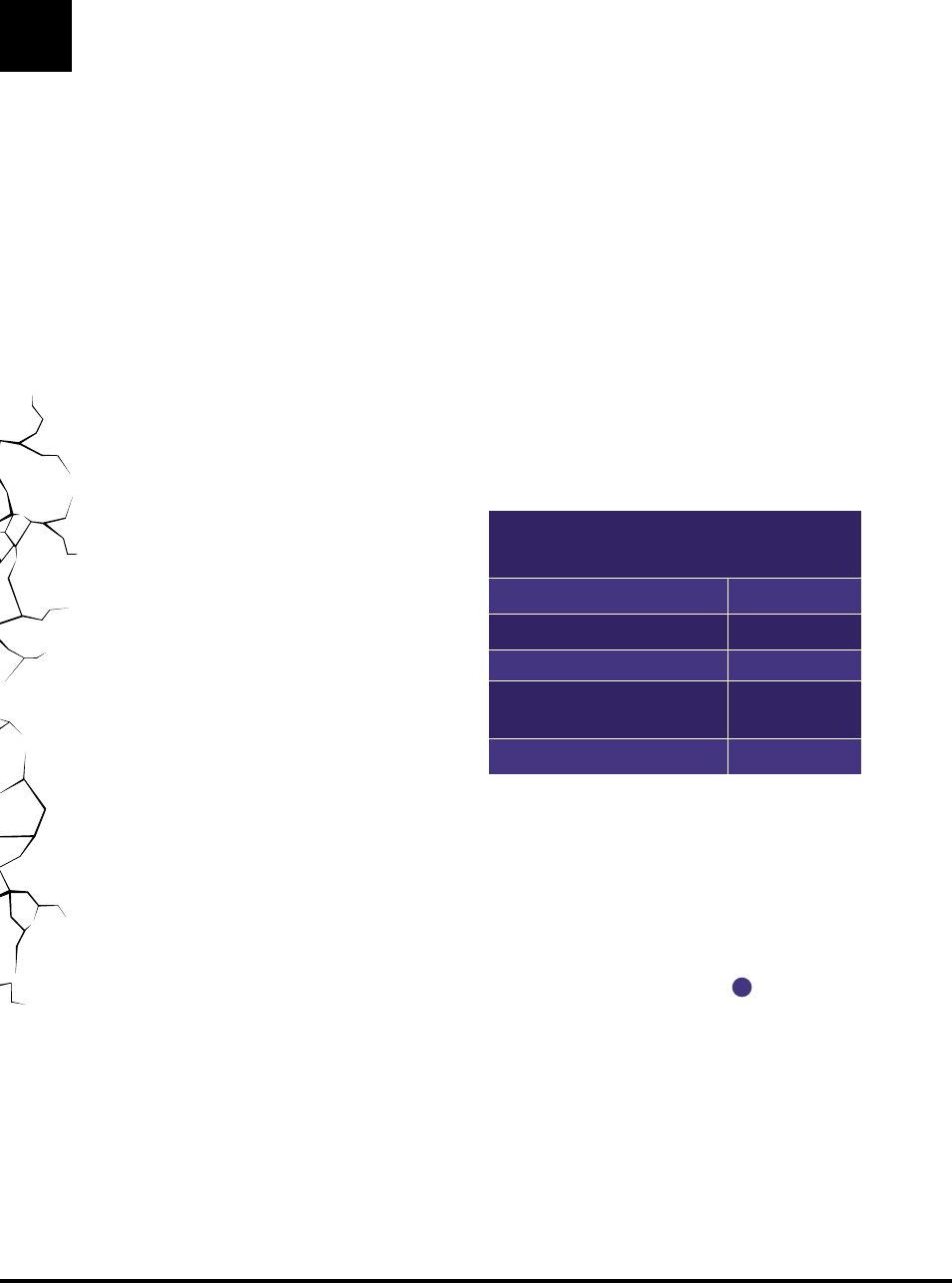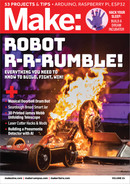
LARGER WEIGHT CLASSES
Competitions for robots above the featherweight
class are few and far between. Lightweights
and Middleweights are practically extinct, and
Heavyweight events have been limited to well-
funded TV shows, or small sportsman events. The
cost of building these robots grows exponentially
between weight classes, so it takes a well-
sponsored team with experience to compete at
this scale. The best-known combat robot event
is BattleBots, which is televised on Discovery and
has near 1 million viewers each episode. Outside
of BattleBots, various Robot Wars TV series from
the U.K. are seen around the world, and several
heavyweight competitions have been filmed in
China including FMB (Fighting My Bots), Clash
Bots, and KOB (King of Bots).
LARGER WEIGHT CLASSES
COMPETITION CLASS WEIGHT
LIGHTWEIGHT 60LBS
MIDDLEWEIGHT 120LBS
INTERNATIONAL
HEAVYWEIGHT
110KG
BATTLEBOTS HEAVYWEIGHT 250LBS
SPINNING WEAPON TYPES
Here’s how they work, and their advantages and
disadvantages, especially in the smaller classes.
VERTICAL SPINNER
These weapons store energy in a spinning mass
that rotates in a vertical plane, generally sticking
out the front of the robot (Figure
A
). They spin
so that the impact point of the weapon is moving
upward, effectively delivering an “uppercut” to
the opponent. Vertical spinners are very effective
fighters, as the reaction force from the uppercut
pushes the bot downward into the floor, keeping
them planted.
The key to the vertical spinner is the ability
to get under other robots. When an opponent
rides up a vertical spinner’s wedge or forks, the
spinning blade can impact the bottom edge of the
opponent’s chassis, rather than grinding against
HOBBYWEIGHT — 12lbs
Hobbyweight bots are the smallest non-insect
bot. This weight class allows for more creativity
in robot design. The larger footprint provides
space for more complex mechanisms, while the
larger weight budget allows for more off-the-
shelf components to be used, and the motors
and electronics take up a smaller proportion,
leaving more weight for frame and weapons.
The weapons on these robots store incredible
amounts of energy, so they must be designed
more robustly than bots in smaller classes.
Plastics are no longer the go-to for frame
material; Hobbyweights start to use aluminum
and steel frames in order to survive the
devastating weapons that they face. While these
bots are four times as large as Beetleweights,
they’re nowhere near as power dense. No micro
drone motors here — Hobbyweight bots work at a
larger scale, with motors that are generally used
in large RC cars and electric skateboards.
DOGEWEIGHT — 15lbs
Dogeweight robots are essentially overweight
Hobbyweights. Most competitions that host larger
bots host 12lb bots, but this 15lb class has found
life in an educational setting. Leagues such as
NRL and Xtreme BOTS host high school and
college level competitions where engineering
students can practically apply what they’re
learning to fighting robots. As with Hobbyweights,
these robots are incredibly dangerous and can do
amazing amounts of damage.
FEATHERWEIGHT — 30lbs
This weight class is very popular for experienced
builders, as a single builder with experience can
design and fabricate a Featherweight. There are
several competitions for these robots annually
in the U.S. and worldwide. Featherweight robots
are generally less weapon oriented than smaller
robots and focus more on reliability and defensive
armor. Good engineering becomes more
important when fighting at the featherweight
scale because parts need to be relatively lighter
than smaller scale robots while providing the
same performance.
ROBOT RUMBLE! Weights & Weapons
Caleb Kraft
28 makezine.com
M81_026-33_SS_WeightWeapons_F1.indd 28M81_026-33_SS_WeightWeapons_F1.indd 28 4/11/22 10:58 AM4/11/22 10:58 AM
..................Content has been hidden....................
You can't read the all page of ebook, please click here login for view all page.
